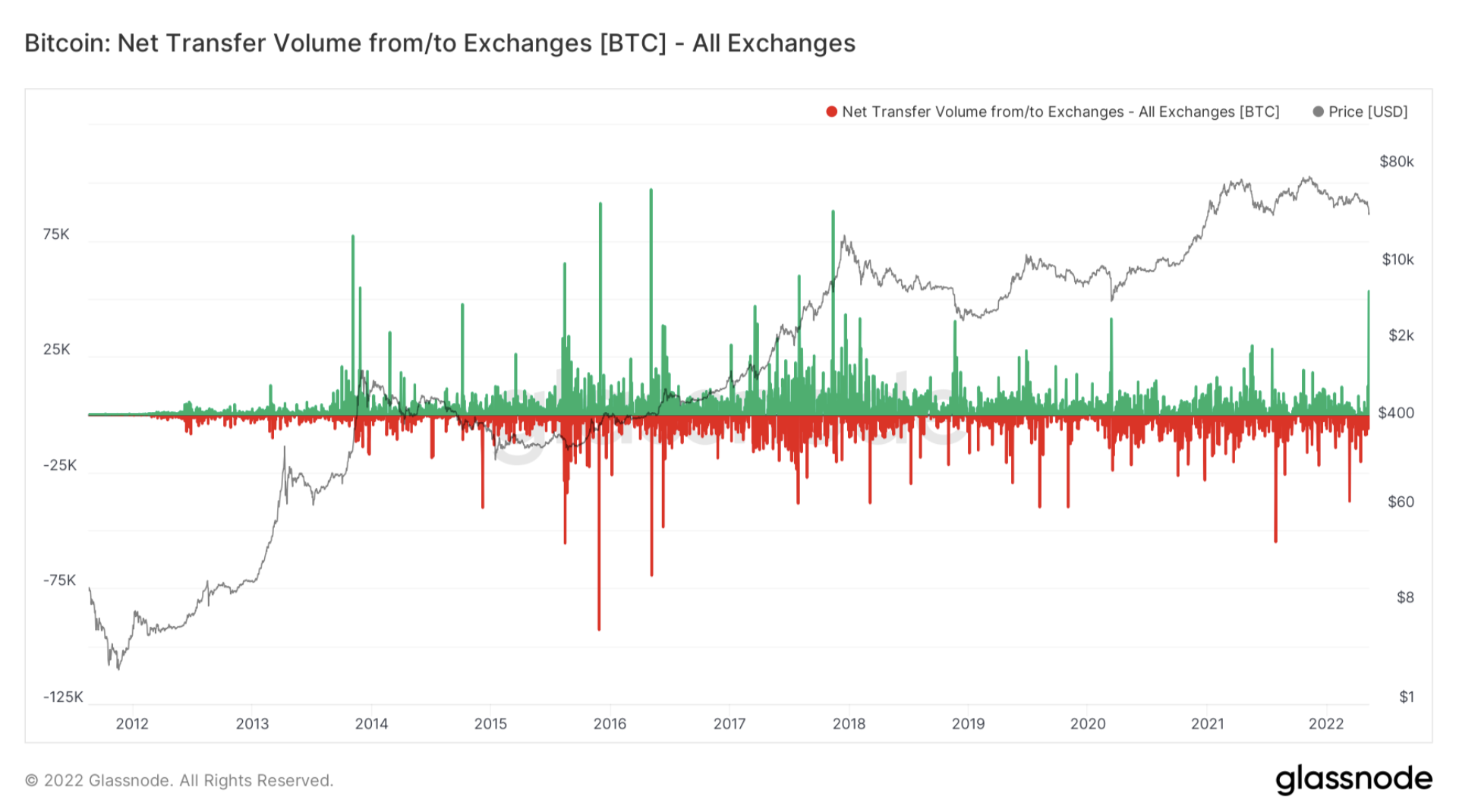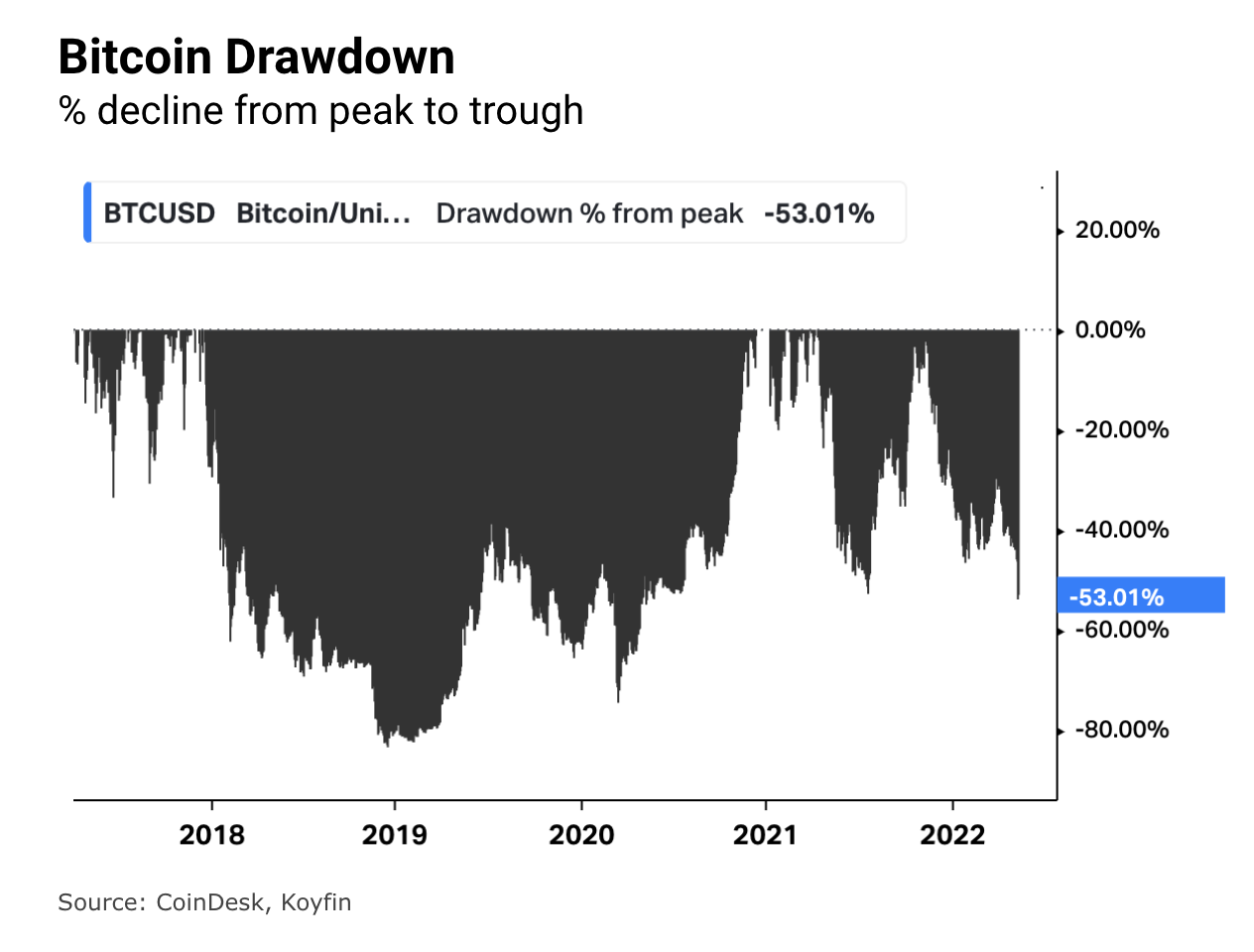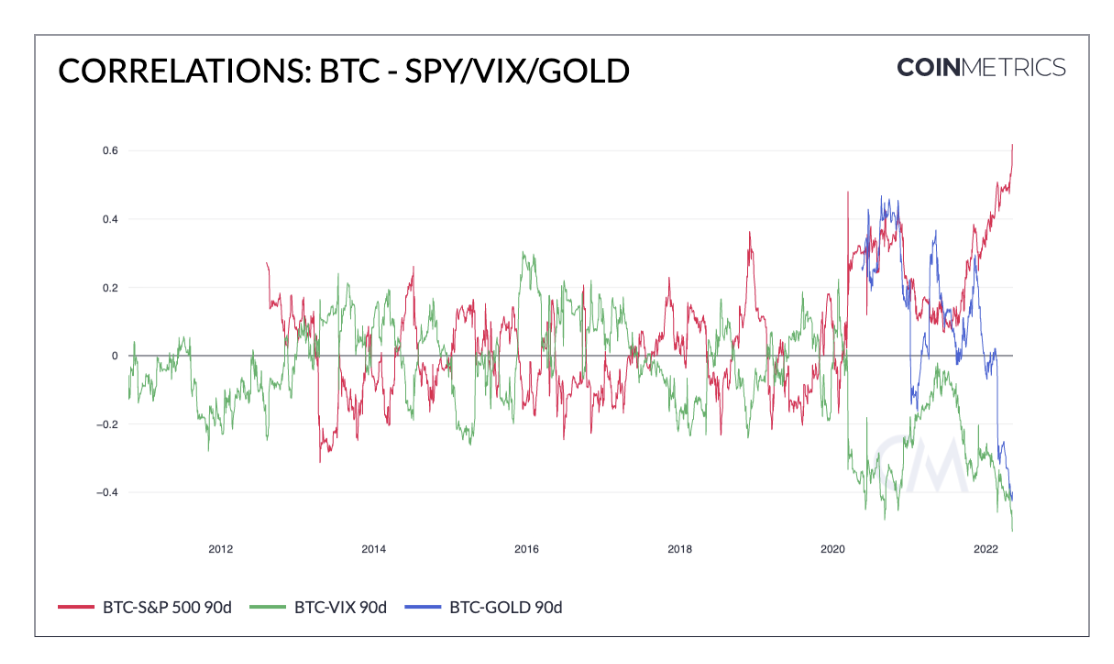Crypto markets were less volatile on Tuesday as some traders stepped in to buy the dip.
Bitcoin's (BTC) price stabilized at around $30,000, which is the bottom of a year-long trading range. The cryptocurrency appears to be oversold, similar to what occurred in late January, which preceded a brief relief rally. Still, some analysts are cautious, pointing to risks in the stablecoin market.
On Tuesday, U.S. Treasury Secretary Janet Yellen discussed ongoing distress in stablecoin UST during her testimony before a U.S. Senate panel. Yellen's comments came just hours after the purportedly dollar-pegged token plummeted to a low of $0.61 over the past 24 hours and at least one platform halted trading it.
"I think that simply illustrates that this is a rapidly growing product, and that there are risks to financial stability, and we need a framework that's appropriate," Yellen said.
Just launched! Please sign up for our daily Market Wrap newsletter explaining what happens in crypto markets – and why.
Typically, BTC declines by less than altcoins during market recoveries because of its lower risk profile relative to smaller tokens.
Latest prices
●Bitcoin (BTC): $31,345, −0.12%
●Ether (ETH): $2,356, +2.28%
●S&P 500 daily close: $4,001, +0.25%
●Gold: $1,837 per troy ounce, −1.11%
●Ten-year Treasury yield daily close: 2.99%
Bitcoin, ether and gold prices are taken at approximately 4pm New York time. Bitcoin is the CoinDesk Bitcoin Price Index (XBX); Ether is the CoinDesk Ether Price Index (ETX); Gold is the COMEX spot price. Information about CoinDesk Indices can be found at coindesk.com/indices.
Exchange inflows spike
The chart below shows the recent spike in the transfer volume of BTC onto exchanges. The latest uptick is the highest since March 2020, when BTC fell by 50% during the coronavirus pandemic-induced sell-off.
Theoretically, exchange inflows suggest that traders are looking to sell their crypto assets, whereas outflows occur when traders are moving tokens to storage (digital wallets) and by doing so will incur a transaction cost.
The latest uptick in BTC exchange inflows could be a sign of capitulation, similar to what occurred at previous price bottoms. Further, bitcoin's trading volume exceeded the recent peak in January and sentiment indicators show extreme bearishness among traders. That typically results in a relief rally.

Bitcoin exchange flows (Glassnode)
Bitcoin's extended drawdown
Bitcoin's drawdown, or the percentage decline from peak to trough, suggests a short-term price low, similar to what occurred in January. During bear markets, however, drawdowns can extend toward 60%-80%, compared with the current 53% peak-to-trough decline.
Bitcoin has experienced lower drawdowns since the 2018 crypto bear market, which is consistent with its long-term uptrend, defined by a series of higher price lows.

Bitcoin drawdown (CoinDesk, Koyfin)
Still, unlike previous conditions, bitcoin's current correlation with the S&P 500 is at an all-time high. That means the cryptocurrency is more sensitive to traditional market influences such as interest rates and current events.

Bitcoin correlations (Coin Metrics)
Altcoin roundup
- (Un)stablecoin and UST turmoil: The fight goes on for TerraUSD (UST), a $16 billion algorithmic stablecoin, as it is exchanging hands for far below its $1 dollar peg. Luna Foundation Guard, the organization that was set up for crises just like this, seems to have deployed all of its $3 billion bitcoin holdings as a loan to market makers but claims it hasn’t spent any of it. Read more here.
- ETH and BTC move in lockstep: Correlation of returns between bitcoin (BTC) and ether (ETH) has been increasing over the past few months and has reached its highest level since early summer of 2020, Tuesday’s Coin Metrics report shows. With volatility picking up on the crypto markets, the different tokens within the digital asset class are trading more closely with one another. Read more here.
- Boba slashes gas fees: Boba Network announced it implemented single-token gas payments on its blockchain, allowing users to pay 25% less in gas fees if they use boba token (BOBA) instead of ether (ETH). Boba is an Ethereum scaling system said to have fast transactions and fees up to 60 times lower than on Ethereum. Expensive transaction costs called gas fees are caused because of congestion, which has been an ongoing issue for users as most decentralized finance and non-fungible token (NFT) transactions take place on the Ethereum network. Read more here.
Relevant insight
- Listen 🎧: The CoinDesk Markets Daily podcast team outlines what you’re really paying for with Ethereum’s gas fees.
- Can You Really Build a ‘Crypto Empire’ in the Empire State?: Mayor Eric Adams wants to make New York City the biggest crypto hub in America, but there are a host of obstacles in his way.
- The FCA Is Holding Its First CryptoSprint: Here’s What the Digital Asset Community Wants From It: The U.K. regulator will meet crypto experts to discuss how to handle disclosing information related to issuance of crypto-assets, regulatory obligations and custody regulations.
- Chilean Digital Peso Would Need to Work Offline, Central Bank Governor Says: Design principles are due out later this week, though no final decision has been taken on the digital peso.
- UST Woes Draw Spotlight in Janet Yellen's Senate Hearing on Financial Risks: Treasury Secretary Janet Yellen highlighted the latest news on the UST algorithmic stablecoin losing its dollar peg during a Senate Banking Committee hearing.
- Michael Saylor Suggests MicroStrategy Will Never Sell Its Bitcoin: The plunging price of bitcoin raised questions about whether the company might soon receive a margin call from its lenders.
- Argentina Bears Down on Crypto Miners Amid Power Shortage: Some registered companies saw a 400% increase in their electricity bills in March, while unregistered miners do not plan to stop using subsidized residential tariffs.
Other markets
Most digital assets in the CoinDesk 20 ended the day higher.
Biggest Gainers
| Asset | Ticker | Returns | DACS Sector |
|---|---|---|---|
| Polygon | MATIC | +9.0% | Smart Contract Platform |
| XRP | XRP | +4.4% | Currency |
| Ethereum | ETH | +2.5% | Smart Contract Platform |
Biggest Losers
| Asset | Ticker | Returns | DACS Sector |
|---|---|---|---|
| Algorand | ALGO | −4.1% | Smart Contract Platform |
| EOS | EOS | −2.6% | Smart Contract Platform |
| Filecoin | FIL | −1.9% | Computing |
Sector classifications are provided via the Digital Asset Classification Standard (DACS), developed by CoinDesk Indices to provide a reliable, comprehensive and standardized classification system for digital assets. The CoinDesk 20 is a ranking of the largest digital assets by volume on trusted exchanges.
DISCLOSURE
Please note that our privacy policy, terms of use, cookies, and do not sell my personal information has been updated.
The leader in news and information on cryptocurrency, digital assets and the future of money, CoinDesk is a media outlet that strives for the highest journalistic standards and abides by a strict set of editorial policies. CoinDesk is an independent operating subsidiary of Digital Currency Group, which invests in cryptocurrencies and blockchain startups. As part of their compensation, certain CoinDesk employees, including editorial employees, may receive exposure to DCG equity in the form of stock appreciation rights, which vest over a multi-year period. CoinDesk journalists are not allowed to purchase stock outright in DCG.


:format(jpg)/cloudfront-us-east-1.images.arcpublishing.com/coindesk/PFTJB3CBBZCGPEUSNCEZ7F3Z7U.jpg)
:format(jpg)/cloudfront-us-east-1.images.arcpublishing.com/coindesk/JHKY64D5QFBAJGUWPLIG2A2IME.png)
:format(jpg)/cloudfront-us-east-1.images.arcpublishing.com/coindesk/T5HXBLVHUZAI3AJQABR3HTE4JA.jpg)
:format(jpg)/cloudfront-us-east-1.images.arcpublishing.com/coindesk/PJTR3KRDWJCRVE3QREM6KUOK7A.png)